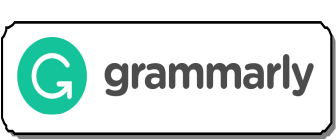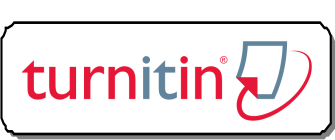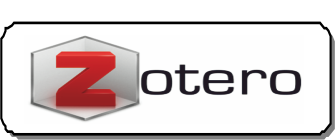Integration of 21st Century Skills into Islamic Religious Education Learning Methods
Abstract
Integration of 21st Century Skills into learning methods is crucial in modernizing Islamic Religious Education (PAI), particularly to address the challenges of learning that are relevant to the demands of the times. This study bridges the gap between traditional Islamic pedagogy and 21st-century competencies, focusing on the material of QS. Al Hujurat: 13. This study uses a qualitative descriptive approach with data collected through in-depth interviews with four PAI teachers from four Public Elementary Schools in Garo City, who were purposively selected based on their active involvement in teaching PAI and their experience implementing 21st-century learning strategies. Interviews were conducted during March–April 2025, recorded, transcribed, and analyzed using Miles and Huberman's interactive analysis model which includes data reduction, data presentation, and drawing conclusions. The results show that PAI teachers apply active learning methods such as group discussions, project-based learning, and the use of digital media, with the main challenges being limited learning time, lack of supporting facilities, and minimal teacher training, while existing support includes school policies and collaboration between teachers. These findings confirm that integrating 21st-century skills into Islamic Religious Education (PAI) learning can increase student engagement and material relevance, but requires adaptive strategies to address resource constraints. This study contributes theoretically by offering a framework for integrating 21st-century competencies into Islamic Religious Education (PAI) learning and practically by providing recommendations for teacher training and strengthening systemic support.
References
Ahmad Fahrudin, M. K. M. (2025). A PesantrenCultural Value-Based Learning Model: Integrating Islamic Values and 21st-Century Skills. Cendekia: Jurnal Kependidikan Dan Kemasyarakatan, 23(1), 89–105. https://jurnal.iainponorogo.ac.id/index.php/cendekia/article/view/10646/4055
Al., M. H. et. (2024). Pesantren Resistance to Indonesia’s National Curriculum to Defend Its Curriculum Model. Revista de Gestão Social e Ambiental, 18(7), 1–5. https://doi.org/10.24857/rgsa.v18n7-049
Anwar, S. (2016). Peran Pendidikan Agama Islam Dalam Membentuk Karakter Bangsa. Jurnal Pendidikan Islam, 7, 157–69.
Ballianie, N., Dewi, M., & Fatimah, S. (2024). Inovasi Pembelajaran Pendidikan Agama Islam Untuk Generasi Milenial. IMEIJ Indo-MathEdu Intellectuals Journal, 5(6), 8370–8382.
Branden Thornhill-Miller et al. (2023). Creativity, Critical Thinking, Communication, and Collaboration: Assessment, Certification, and Promotion of 21st Century Skills for the Future of Work and Education. Journal of Intelligence, 11(3), 1–32.
Darmawan, D., Qomaruzzaman, B., Hanan, A., & Mauliddin, A. I. (2024). The Impact Of Problem-Based Learning On Understanding And Application Of Tafsīr Among University Students. 30(5), 8684–8690. https://doi.org/10.53555/kuey.v30i5.4444
Daryanto, S. K. (2017). Pembelajaran abad 21 / Daryanto, Syaiful Karim. Gaya Media.
Dena Sri Anugrah, Udin Supriadi, Saepul Anwar, N. M. L. (2025). Integrating Problem-Based Learning With Islamic Practice: a Systematic Review of Educational Outcomes and Religious Engagement. Al-Qalam, 31(1), 1–19. https://www.jurnalalqalam.or.id/index.php/Alqalam/article/view/1606
Destriani. (2023). Analisis Pembelajaran Berbasis 4C’s Pada Program Studi Pendidikan Agama Islam.
Fauziyah, A. S., & Badrussalam, D. (2023). Implementation of Problem Solving Method To Improve Student ’ s Critical Thinking In Islamic Religious Education Learning. Jurnal Edumaspul, 7(2), 5166–5173.
Green, C. A., Kim, E. H., O’Sullivan, P. S., & Chern, H. (2018). Using Technological Advances to Improve Surgery Curriculum: Experience With a Mobile Application. Journal of Surgical Education, 75(4), 1087–1095. https://doi.org/10.1016/j.jsurg.2017.12.005
Hariyadi, S., Santosa, T. A., & Sakti, B. P. (2023). Effectiveness of STEM-Based Mind Mapping Learning Model to Improve Students ’ Science Literacy in the Era of Revolution. Jurnal Penelitian Pendidikan IPA, 9(10), 791–799. https://doi.org/10.29303/jppipa.v9i10.5125
I Putu Suardipa, K. P. (2020). Urgensi Sistem Penjaminan Mutu dab Akreditasi Dalam Pemetaan Mutu Satuan Pendidikan. Jurnal Penjaminan Mutu, 1(2), 143–153.
Ichsan, I., Suharyat, Y., Santosa, T. A., & Satria, E. (2023). Effectiveness of STEM-Based Learning in Teaching 21 st Century Skills in Generation Z Student in Science Learning: A Meta_Analysis. Jurnal Penelitian Pendidikan IPA, 9(1), 150–166.
M. Firman, Ika Ratih Sulistiani, M. E. N. (2021). Peran Guru Sebagai Komunikator dan Fasilitator dalam Proses Pembelajaran Pendidikan Agama Ialam SMP Muhammadiyah 06 DAU Malang. VICRATINA: Jurnal Pendidikan Islam, 6(3), 53–61.
Malizal, Z. Z. (2025). Islamic Education and Globalization: Curriculum, Identity, and Digital Integration. Sinergi International Journal of Islamic Studies, 3(2), 70–82. https://journal.sinergi.or.id/index.php/ijis/article/view/711
Maner, J. K. (2016). Into the Wild: Field Research Can Increase Both Replicability and Real-World Impact. Journal of Experimental Social Psychology 66, 100–106. https://doi.org/10.1016/j.jesp.2015.09.018
Miles, M. B., & Huberman, A. M. (2014). Analisis Data Kualitatif: Buku Sumber tentang Metode-Metode Baru. UI Press.
Naili Nur Fitrotun, Moh. Miftakhul Huda, A. A. F. (2020). Persepsi Calon Guru PAI Terhadap Merdeka Belajar. TADRIS: Jurnal Pendidikan Islam, 15(2), 236–246. https://doi.org/10.19105/tjpi.v15i2.3387
Nalurita, N. (2020). Guru sebagai agen perubahan. The Journal Publishing This Is Your Book Era!, 8–10. http://thejournalish.com/ojs/index.php/sudutpandang
Nurhalimah, S., Klaudia Selfa, S., Amanda, U., & Ilmi, D. (2024). Penguatan Pendidikan Peserta Didik Melalui Keterampilan 4C dengan Mengimplementasikan Pembelajaran Abad 21 dalam Pembelajaran Pendidikan Agama Islam. Jurnal Ilmu Pendidikan Islam, 2(1), 239–249. https://doi.org/10.59059/al-tarbiyah.v2i1.799
Sari, N. (2023). Konsep Pendidikan Agama Islam Menurut Abuddin Nata. Taushiah: Jurnal Hukum, Pendidikan Dan Kemasyarakatan, 13(1), 144–156.
Siregar, H. S., Nurhamzah, Munir, M., & Fikri, M. (2025). Enhancing Islamic Education Through Technology Integration: a Study of Teaching Practices in Indonesia. Jurnal Ilmiah Peuradeun, 13(2), 959–986. https://doi.org/10.26811/peuradeun.v13i2.1875
Waliyul Maulana iregar, Septian Prawijaya, Fandi Setiawan, S. R. P. (2023). Peran Guru Penggerak Sebagai Agen Perubahan Pendidikan. Jurnal Guru Kita, VIII(I), 1–19.
Wantu, H. M., Intes, A., Barroso, U., & Siyono, S. (2024). The Role of Islamic Religious Education in 21st Century Science and Technology. International Journal of Educational Narratives, 2(3), 334–346. https://doi.org/10.70177/ijen.v2i3.1077
Yuliana. (2024). Islamic Education Learning in the 21st Century : Confronting Challenges and Capitalizing on Opportunities to Develop 4C Skills. AL-IED Actual Learning and Islamic Education, I(1), 41–47.
Copyright (c) 2025 Satri Handayani, Neni Neni, Sulthon Fathoni

This work is licensed under a Creative Commons Attribution-ShareAlike 4.0 International License.
Please find the rights and licenses in SYAMIL Jurnal Pendidikan Agama Islam (Journal of Islamic Education). By submitting the article/manuscript of the article, the author(s) agree with this policy. No specific document sign-off is required.
1. License
The non-commercial use of the article will be governed by the Creative Commons Attribution license as currently displayed on Creative Commons Attribution-ShareAlike 4.0 International License.
2. Author(s)' Warranties
The author warrants that the article is original, written by stated author(s), has not been published before, contains no unlawful statements, does not infringe the rights of others, is subject to copyright that is vested exclusively in the author and free of any third party rights, and that any necessary written permissions to quote from other sources have been obtained by the author(s).
3. User/Public Rights
SYAMIL spirit is to disseminate articles published are as free as possible. Under the Creative Commons license, SYAMIL permits users to copy, distribute, display, and perform the work for non-commercial purposes only. Users will also need to attribute authors and Register on distributing works in the journal and other media of publications. Unless otherwise stated, the authors are public entities as soon as their articles got published.
4. Rights of Authors
Authors retain all their rights to the published works, such as (but not limited to) the following rights;
Copyright and other proprietary rights relating to the article, such as patent rights,
The right to use the substance of the article in own future works, including lectures and books,
The right to reproduce the article for own purposes,
The right to self-archive the article (please read out deposit policy),
The right to enter into separate, additional contractual arrangements for the non-exclusive distribution of the article's published version (e.g., post it to an institutional repository or publish it in a book), with an acknowledgment of its initial publication in this journal (SYAMIL Jurnal Pendidikan Agama Islam (Journal of Islamic Education)).
5. Co-Authorship
If the article was jointly prepared by more than one author, any authors submitting the manuscript warrants that he/she has been authorized by all co-authors to be agreed on this copyright and license notice (agreement) on their behalf, and agrees to inform his/her co-authors of the terms of this policy. SYAMIL will not be held liable for anything that may arise due to the author(s) internal dispute. SYAMIL will only communicate with the corresponding author.
6. Royalties
Being an open accessed journal and disseminating articles for free under the Creative Commons license term mentioned, author(s) aware that SYAMIL entitles the author(s) to no royalties or other fees.
7. Miscellaneous
SYAMIL will publish the article (or have it published) in the journal if the article’s editorial process is successfully completed. SYAMIL editors may modify the article to a style of punctuation, spelling, capitalization, referencing and usage that deems appropriate. The author acknowledges that the article may be published so that it will be publicly accessible and such access will be free of charge for the readers as mentioned in point 3.












